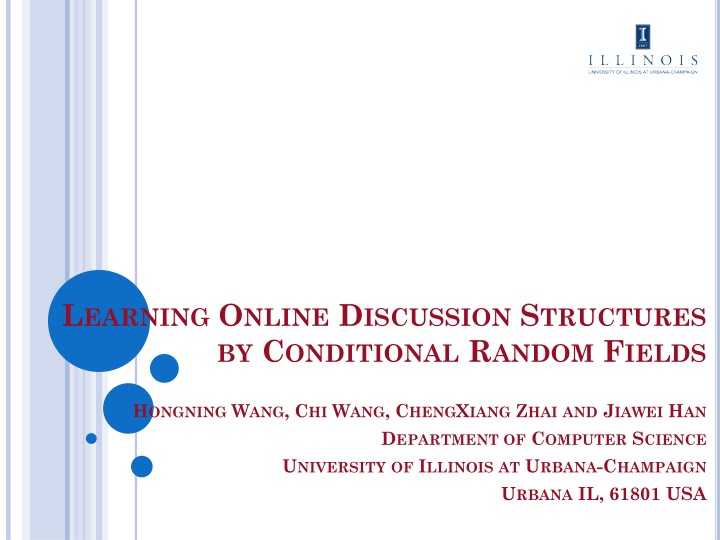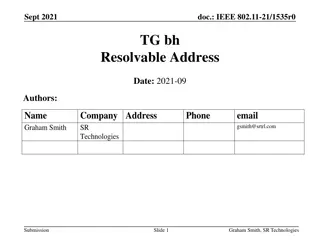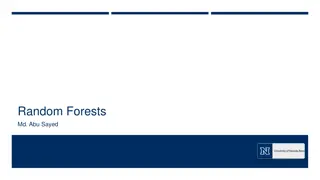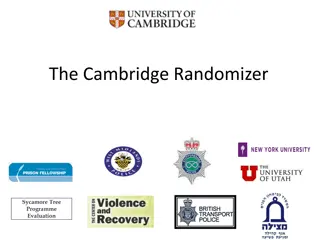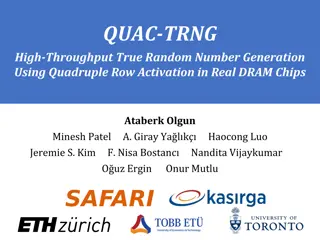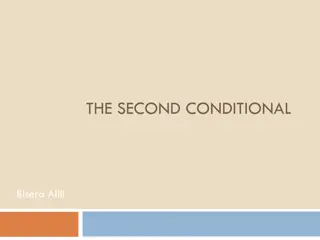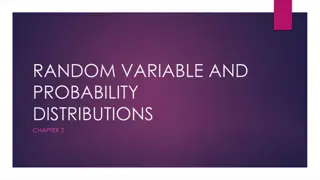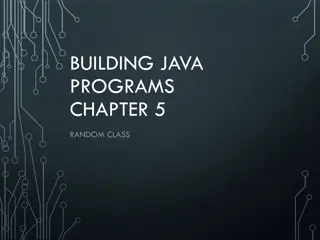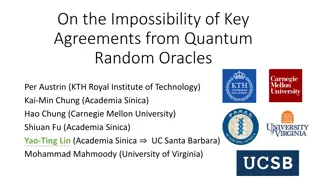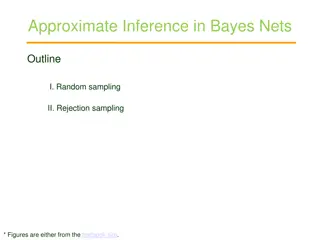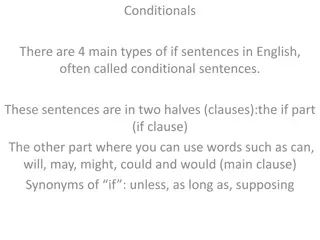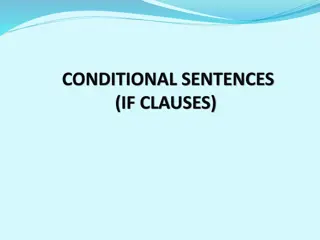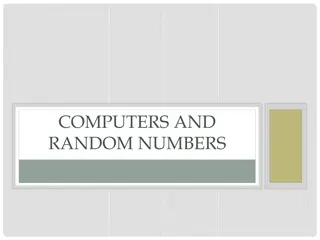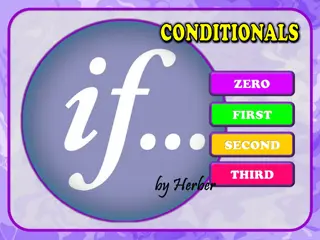Online Discussion Structures by Conditional Random Fields
In this study by Hongning Wang, Chi Wang, Chengxiang Zhai, and Jiawei Han from the Department of Computer Science at the University of Illinois at Urbana-Champaign, the focus is on learning online discussion structures using conditional random fields. The research delves into the hidden information within forum structures, the reconstruction of forum discussion structures, and the use of probabilistic graphical models like CRFs. Explore the nuances of information conveyed through replying relationships and the temporal dependencies in user interactions within online forums.
Download Presentation

Please find below an Image/Link to download the presentation.
The content on the website is provided AS IS for your information and personal use only. It may not be sold, licensed, or shared on other websites without obtaining consent from the author.If you encounter any issues during the download, it is possible that the publisher has removed the file from their server.
You are allowed to download the files provided on this website for personal or commercial use, subject to the condition that they are used lawfully. All files are the property of their respective owners.
The content on the website is provided AS IS for your information and personal use only. It may not be sold, licensed, or shared on other websites without obtaining consent from the author.
E N D
Presentation Transcript
LEARNING ONLINE DISCUSSION STRUCTURES BY CONDITIONAL RANDOM FIELDS HONGNING WANG, CHI WANG, CHENGXIANG ZHAI AND JIAWEI HAN DEPARTMENT OF COMPUTER SCIENCE UNIVERSITY OF ILLINOIS AT URBANA-CHAMPAIGN URBANA IL, 61801 USA
Introduction Online forum: a rich information repository[1,2] Interactive accumulation Various topics 2
Information Hidden in Structures Replying relationship Convey important information about the discussion[2] Structure is not always visible Flat View Threaded View v.s. 4
0 Structure Reconstruction 1 3 Existing method Content modeling: topic models[3] Ranking approach: retrieve parent post[4] Beyond content analysis Posts are usually short Temporal dependency User interaction Our approach: structural learning 2 4 5
Previous post Problem Definitions 0 1 2 3 4 Chain structure Time line 0 deesto Jan 6, 2011 11:06 AM I see lots of new complaints here about system slowness, apps not working, etc., but after updating my MacBook Pro from 10.6.5 to 10.6.6, I can no longer boot into OS X. Root post Tree structure 1 3 a brody Jan 6, 2011 12:59 PM Never upgrade a production machine without a backup. Unfortunately you can forget about the presentation. First step is to recover: http://www.macmaps.com/backup.htm l#RECOVER Post ID Frank Miller2 Jan 6, 2011 2:19 PM I suggest you start this machine in 'target disk' mode - shut it down, then restart it with the 'T' key held down while it is connected to another Mac with a FireWire cable. Author name Post time Post content Parent post 4 2 Deesto Jan 6, 2011 2:08 PM Hi a brody, and thank you for responding. I'm not sure from where you made this assumption, but of course I keep data back-ups; and I'm not sure what you classify as a "production machine" deesto Jan 6, 2011 2:29 PM Thanks Frank. But I really only have one Mac: this one. My personal files are not at risk: I have backups, and obtaining the files off of the machine is not a problem. 6
threadCRF Probabilistic graphical model Conditional probability 0 p( |posts) p( | , ) 0 4 0 4 1 2 3 4 CRFs framework Features Model Prediction 7
Features Node features Local potential of replying relations Edge features Long-range dependency among the predictions 8
Node Features Content Reply pattern Author interaction Temporal proximity 0 1 3 2 4 Content sharing 9
Edge Features Content Reply pattern Author interaction Temporal proximity 0 1 3 2 4 Context propagation Discuss parallel aspects Do not repeatedly reply Do not jump back Reply to one replied to you Reply to one you have replied to Reply to one closest in sub-discussion 10
Inference and Model Learning MAP inference Exact inference is intractable Approximate inference Tree reweighted message propagation[5] Maximum likelihood Gradient 11
Experiments Evaluation criterion 0 0 0 1 0 1 3 1 3 2 1 2 3 4 2 4 2 4 3 4 (a) Ground-truth (b) LAST (c) FIRST (d) threadCRF Edge accuracy 0.75 0.5 0.75 12
New Evaluation Metrics 0 1 3 Path accuracy 2 4 (a) Ground-truth Path precision & recall 0 1 0 2 1 3 Node precision & recall 3 2 4 4 (b) FIRST (c) threadCRF 13
Quantitative evaluations Forum Data Set Apple discussion (http://discussions.apple.com) Google earth community (http://bbs.keyhole.com) CNET (http://forums.cnet.com) 14
Replying Relation Reconstruction I Baseline FIRST, LAST, SIM, Ranking SVM[4] Apple Discussion 75% training, 25% testing 15
Replying Relation Reconstruction II Baseline FIRST, LAST, SIM, Ranking SVM[4] Google Earth Community 75% training, 25% testing 16
Replying Relation Reconstruction III Prediction performance on long threads Threads with more than 10 posts 17
Adaptability Evaluation I Varying training size 18
Adaptability Evaluation II Cross domain testing 2000 v.s. 2000 threads from each domain 19
Applications Forum search Using thread structure to smooth language models[6] 30 queries with 900 annotated posts from CNET 20
Application II Community Question Answering Answer post retrieval in Apple Discussion Ranking criterion 21
Conclusion Replying relationship reconstruction threadCRF Rich features: short-range and long-range dependencies Novel evaluation metrics Future directions Micro-blogs: twitter, facebook Advanced content analysis 22
Acknowledgment SIGIR 2011 Student Travel Grant 23
References G. Cong, L. Wang, C. Lin, Y. Song, and Y. Sun. Finding question- answer pairs from online forums. In Proceedings of the 31st SIGIR, pages 467 474, 2008. J. Zhang, M. Ackerman, and L. Adamic. Expertise networks in online communities: structure and algorithms. In Proceedings of the 16th WWW, pages 221 230, 2007. C. Lin, J. Yang, R. Cai, X. Wang, and W. Wang. Simultaneously modeling semantics and structure of threaded discussions: a sparse coding approach and its applications. In Proceedings of the 32nd SIGIR, pages 131 138, 2009. J. Seo, W. Croft, and D. Smith. Online community search using thread structure. In Proceedings of the 18th CIKM, pages 1907 1910, 2009. M. Wainwright, T. Jaakkola, and A. Willsky. MAP estimation via agreement on trees: message-passing and linear programming. Information Theory, IEEE Transactions on, 51(11):3697 3717, 2005. H. Duan and C. Zhai. Exploiting Thread Structure to Improve Smoothing of Language Models for Forum Post Retrieval. In Proceedings of the 33rd ECIR, 2011. 1. 2. 3. 4. 5. 6. 24
THANKYOU! Q&A 25
